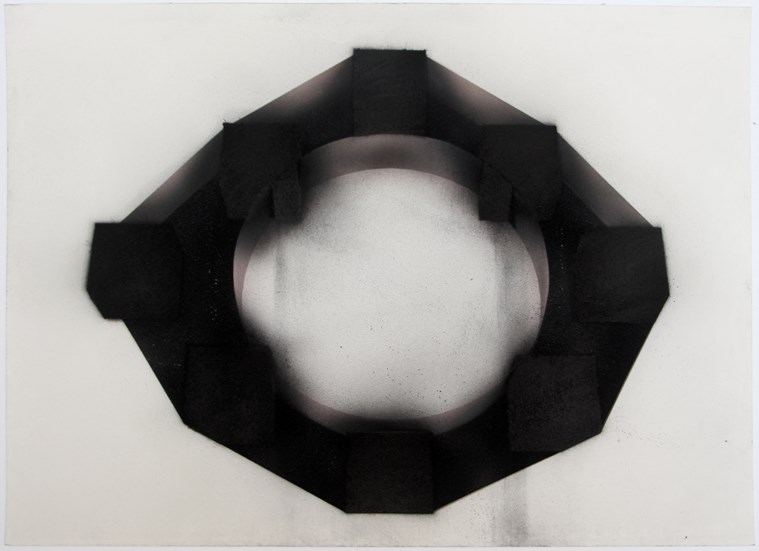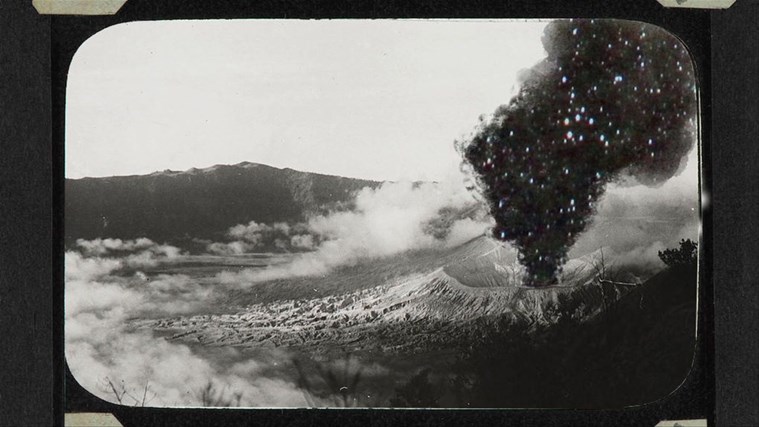Latest Comment
Post Comment
Read Comments
 "There are often certain images or references that resonate with you over the years," Jitish Kallat said. (Source: Jitish Kallat Studio)
"There are often certain images or references that resonate with you over the years," Jitish Kallat said. (Source: Jitish Kallat Studio)In the online platform South South’s inaugural curatorial exhibition ‘I Draw, Therefore I Think’ you bring together over 60 artists from across the world. Could you share the thought behind using (British naturalist) Charles Darwin’s 1837 sketch Tree of Life as a curatorial prompt?
There are often certain images or references that resonate with you over the years. The Darwin sketch of the phylogenetic tree was one such drawing that has been of interest to me for over a decade. When I was invited to curate the inaugural curatorial project for South South, somehow, my attention was drawn towards this drawing from one of his early ‘transmutation notebooks’. This speculative drawing is presented as the inaugural ‘prompt’ to think about the process of drawing, as well as placing the question of ‘evolution’ at the centre of inquiry. I’ve often wondered if he wrote ‘I think’ and then the words began to mutate into a drawing. That is an interesting thought that the words could not contain the intuition and a drawing had to happen to manifest the idea. If you reverse that, and ask yourself, did he draw first, that is equally beautiful because then he realises that drawing is like a projection of thought… He writes the words ‘I think’ pointing to the ambivalence inherent in the processes of observation, rumination, discovery and doubt. It is really a coming together of these vital ingredients — where ideas produce images and images, in turn, procreate ideas.
 Emmie Nume is a Ugandan artist born 1999 and living in Kampala. His paintings and drawings reflect a deeply intuitive practice. (Source: South South)
Emmie Nume is a Ugandan artist born 1999 and living in Kampala. His paintings and drawings reflect a deeply intuitive practice. (Source: South South)
What made you turn to drawing as the foundation of creativity? It is a medium that has stayed with you, too.
At one level, I could say that the curatorial project emerged out of my own personal obsession with ‘drawing’ as a practice, and as a tool to work through one’s intuitions. There are several possibilities that a drawing allows. Drawings have a beautiful open-endedness that allows us to pose questions that are urgent at this moment. We are experiencing a frontier moment in our evolution with concerns about viruses, the questions around genomics, climate anxieties and the progressive alienation between peoples and estrangement from the larger web of life.
 Ali Beheshti said, “I look for forms in square shapes, in edges, and in architectural aspects or in structures”. (Source: South South)
Ali Beheshti said, “I look for forms in square shapes, in edges, and in architectural aspects or in structures”. (Source: South South)
For me, drawing has been a studio ritual for many years. At 23, when I had my first solo exhibition, ‘PTO’, more than half the works were drawings. Across the last two decades, there are drawings that I have done as a series of studies. I can recall Womb Studies (2002), Analgesic Studies (2005-07), or, more recently, there are elemental drawings that are often mediated by forces of nature. The Wind Study drawings register the silent conversation between fire and wind. For the Rain Studies, I used paper overlaid with fast-drying pigment momentarily exposed to rain. In mid-2020, at the time of progressive lockdowns the world over, I began Circadian Study (Contact Tracing) — a series of observations of the sun’s cyclical rhythms made by tracing the contours of moving light and shadows cast by fallen twigs on the studio terrace. On January 1, 2020, I began the Integer Study (Drawing From Life). In these works, the three integers are the algorithmically estimated human population of the planet at that very moment, as well as the estimated births and deaths that have occurred until that time of day. The numbers are abstractions forming a triangulation of life by mapping birth, death and time.
 The animation POLYHEDRA is a poetic cosmogony and personal interpretation of the order of things: stars, earth forms, the insides, the outsides, and the beyond what we can see. (Source: South South)
The animation POLYHEDRA is a poetic cosmogony and personal interpretation of the order of things: stars, earth forms, the insides, the outsides, and the beyond what we can see. (Source: South South)
This show comprises really diverse works. How did you work on the selection?
My mandate to myself was not so much to ‘curate the content’ but to ‘curate the intent’. It was like letting a certain set of ideas circulate and allowing the resultant echoes to shape the exhibition. It is, in that sense, a diffused curatorial project, where I received responses and let them assemble into this structure as if through a process of natural selection.
The works in the exhibition are indeed diverse, ranging from abstraction to figuration. If in Raqs Media Collective’s Why Do They Call the Answer to a Question, A Solution (2020) the very act of drawing becomes visible, in Rirkrit Tiravanija’s reflective chrome work one finds references to darwin and (French painter Marcel) Duchamp. In Taiwanese artist Yuan Goang Ming’s uncanny video Everyday Manueur, a highrise city is seen with the camera moving through its isolated streets. This was shot in 2018, before the pandemic, during a particular day when Taiwan does a drill, and, in the last year, the entire world enacted that drill.
 At once familiar and alien, landscapes are at the core of Talar Aghbashian’s work. (Source: South South)
At once familiar and alien, landscapes are at the core of Talar Aghbashian’s work. (Source: South South)
You and Reena (Kallat, wife) are showing parallelly at Norrtälje Konsthall in Sweden. Was the juxtaposition planned?
The two exhibitions are a sort of mini-surveys of both our recent work. My exhibition, ‘Epicycles’, includes the video The Eternal Gradient (2015), where rotis morph with the waxing and waning images of the moon as if aeons of time were passing through an ever-changing lunar almanac. There are large format paintings, drawings such as Wind Study (Hilbert Curve), and sculptures such as The Infinite Episode. Helen Hedensjo, the curator, said she was mindful of our diverse practices and was keen to place them adjacent to each other. They are taking place on two different floors of the Konsthall.